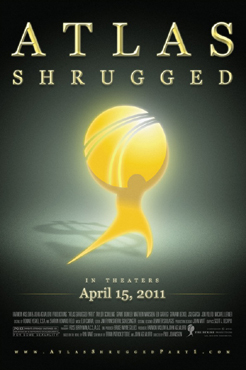|
It is
impossible to overlook the very existence of this movie as one of its
accomplishments. Through the financing of John Aglialoro and the direction of
Paul Johansson, a film was created
 that
neither Ayn Rand herself nor numerous renowned directors and producers over the
past 40 years were able to bring to fruition. In the face of the continual
barriers and challenges that impeded the development of an Atlas Shrugged
film, the fact that I was able to sit in a theater and enjoy such a film is
itself a testimony to the power of human productivity and creativity. Aglialoro
and Johansson exemplify the best of rational individualism in approaching this
elusive challenge with determination and tackling it their own way — even
filming all of it in a mere 27 days to ensure that Aglialoro's rights to make
such a film would not expire. (For those interested in how the first Atlas
Shrugged movie came to be, Brian Doherty provides an
excellent glimpse into some of the people and events surrounding the making
of this film.) What Aglialoro and Johansson brought forth is worthy of
admiration for its own sake, though, of course, it is not beyond constructive
criticism. Despite time and resource limitations, the creators of this movie
accomplished an impressive feat. that
neither Ayn Rand herself nor numerous renowned directors and producers over the
past 40 years were able to bring to fruition. In the face of the continual
barriers and challenges that impeded the development of an Atlas Shrugged
film, the fact that I was able to sit in a theater and enjoy such a film is
itself a testimony to the power of human productivity and creativity. Aglialoro
and Johansson exemplify the best of rational individualism in approaching this
elusive challenge with determination and tackling it their own way — even
filming all of it in a mere 27 days to ensure that Aglialoro's rights to make
such a film would not expire. (For those interested in how the first Atlas
Shrugged movie came to be, Brian Doherty provides an
excellent glimpse into some of the people and events surrounding the making
of this film.) What Aglialoro and Johansson brought forth is worthy of
admiration for its own sake, though, of course, it is not beyond constructive
criticism. Despite time and resource limitations, the creators of this movie
accomplished an impressive feat.
The Atlas Shrugged:
Part I movie may not be complete or comprehensive in reflecting the first
third of Ayn Rand's monumental novel, but what movie could be? To compress over
300 pages of intense storyline and sophisticated ideas into 97 minutes would
necessitate omitting some of the richness of the novel. I, for one, would have
preferred a slightly longer film that incorporated more of Rand's original
elements: the childhood flashbacks of Eddie Willers and Dagny Taggart, the story
of the 20th Century Motor Company as actually told by one of its former
employees, and the encounters that Eddie Willers unknowingly has with John Galt
himself. In places, the movie does feel rushed, and John Galt's appearances seem
rather forced for this reason. If the film had, as the book does, provided a
smoother transition to Galt's utterances — instead of the sudden "Do you want to
live in a society that values individual achievement?" — the effect would have
been more compelling. The characters that have a more frequent presence on the
screen, though, more closely approach Rand's portrayals. Throughout both the
book and the film, I find Hank Rearden, not John Galt, to be the protagonist
with whom it is easiest to identify. Grant Bowler's portrayal of Rearden does
him justice as a creator of value who comes, through a process of philosophical
discovery, to recognize the greatness of what he does.
|

